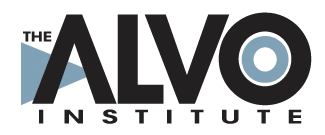By Rebecca Tomasini, Founder and CEO, The Alvo Institute
February 12, 2014
Sometimes, we need to go slow, so that we can go fast.
Amid the push for personalized learning for all students, don’t forget that teachers, good teachers, are students too. Just as we move to end anything less than personalized learning for kids, we also make the case to end the all-must fit-into one-size professional development for teachers.
When I left the classroom and moved into educator support, I promised myself that I would not replicate the things that drove me nuts when I was a teacher like the all faculty PD. I shudder to recount the experience, but here it is.
Like too many faculty PD sessions, when I delivered my first PD session many moons ago (long before launching Alvo) it began with the cattle call; I piled the entire faculty into a single room and delivered, yes, a Power Point to a justifiably frustrated faculty. And yes, my delivery was peppered with cute jokes, but still, it was a Power Point to fuel my talking at the teachers. Sure I did some “think-pair-share” stuff, but all in all, the session was about absorbing all I had to offer. It was all about me.
I knew better.
In launching Alvo in 2009, I decided to recommit to my original promise and deliver PD based on constructivist, blended learning principles. I would use a combination of traditional and online content as well as personalized sessions for teachers in the same way that we were hoping they would eventually deliver lessons to students. We would even encourage schools to allocate PD funds based on individual teacher needs rather than budget a single line item to “PD”.
And so, we did.
Competencies that Support Personalization via Blended in PD
As Alvo initiated PD programs, we started by identifying the discrete competencies that teachers would need to draw upon as they developed a blended learning practice. We identified 39. We then developed a survey aligned to the competencies. Once a teacher completes the survey, they receive a customized report gauging their attitudes, perceptions and practices across a spectrum of four key areas: Data Use and Management, Instructional Practice, Classroom Culture and Engagement, and Approach to Innovation. We call these areas Alvo’s Instructional Fundamentals.
Using the report as a guide, we evaluate two important areas that inform our personalization methods. First, we detect trends across a school. Second, we develop a personalized professional development plan for each teacher with a unique path, pace and content. This personalized path allows for teachers, along with their instructional leaders, coaches, and peers, to prioritize which skills they will develop. In addition, a leveled rubric articulates a school’s vision of the end result and allows a gradual release towards that vision. In combination with this rubric, the customized report gives teachers a detailed, measurable path towards using blended learning to personalize instruction for each student.
How This Report Translates to Customized PD
It has been our experience that a faculty is rarely, if ever, in exactly the same place. So we at Alvo rarely, if ever, deliver a PD for the full faculty. In fact, in the five years since our inception, we have yet to deliver a support package, launch a program or run a pilot in exactly the same way for more than one client or school.
For example, among our current clients, we are supporting two schools that are each piloting blended learning. Both have eager participants and supportive, skilled principals. The different schools, however, are at different places in implementing critical pre-requisites for running a blended classroom. At school #1, more than half the faculty was deeply entrenched in the practice of small group instruction, while at school #2 many teachers had never used small group instruction.
For the teachers who were more experienced and successful in small group instruction, we moved swiftly into advanced blended features like using Online-Learning Providers (OLPs). On the other hand, the teachers who had never used small group instruction took the time they needed to gain experience in this pre-requisite skill before being introduced to advanced features like OLPs.
In short, teachers move towards the school’s vision of blended based on where their practice is at the onset of the pilot.
Impact of the Gradual Release Approach on PD
When we have been asked by schools to run more traditional “everyone jump into the pool” PDs, we have seen a faster ramp-up to using technology, but every single time we have seen a plateau just as quickly. Schools that use a more customized, gradual release PD model might be slower to get everyone in the proverbial pool, but they will have a steady, gradual ramp-up in implementation and greater transformation to classroom practice at the end of the pilot.
Sometime we need to go slowly, in order (eventually) to go quickly.
Rebecca is the Founder and CEO of The Alvo Institute. She has been a new teacher mentor and has taught in the credentialing programs and Graduate Schools of Education at Claremont Graduate University, Lewis and Clark and Portland State.
